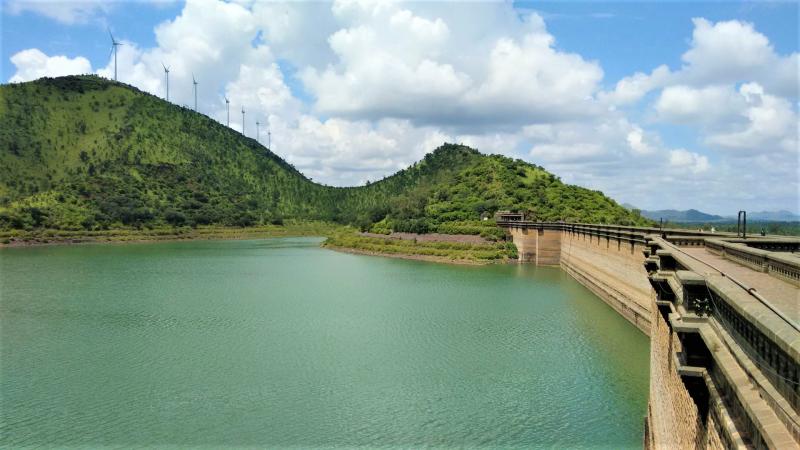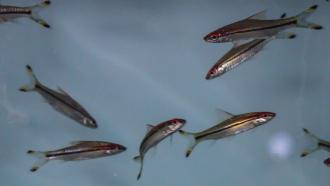
Finding Nemo, Pixar’s animated movie released in 2003, revolved around the adventure of a lost clownfish, Nemo, who finds his way to his father, Marlin. For its part, the roller-coaster ride of adrenaline and the numerous exploits of Nemo until he found his way back held the plot. But for the fish in a river close to you, the chances are that many Marlins would still be looking for their long lost Nemos, never to be found! The culprits are not always predators or baits, but an unsuspecting, massive dam built across the river, which alters the flow of water.
In a new study, an international team of researchers have found that large dams have heavily fragmented fish population across the world. Published in the Proceedings of the National Academy of Sciences, the study assessed about ten thousand species of fish worldwide affected by around 40,000 existing dams and 3,700 upcoming dams worldwide. The findings reveal that fish habitats are most disconnected in the United States, Europe, South Africa, India, and China. The proposed dams are poised to further worsen fish habitat connectivity in tropical watersheds like the Amazon, Congo, Mekong and Salween.
“We mapped, for the first time, connectivity values for ~10,000 freshwater fish, using a species-specific modelling framework that takes into account the geographic range of the species,” says Dr Valerio Barbarossa.
He is a researcher at the Institute for Water and Wetland Research, Radboud University, The Netherlands, and the corresponding author of the study.
“While previous studies have looked at specific regions/species or have given mostly qualitative expectations, we quantify the impacts of dams on freshwater fish by painting a global picture.”
The researchers used data on existing dams from GRanD and GOODD datasets that contain information on dam locations across the world. They used separate methods to arrive at a ‘connectivity index’ for fish that migrate between fresh and salt waters (diadromous) and those that are found only in freshwater (non-diadromous). The current connectivity values were higher for diadromous species (86%) than for non-diadromous species (73%). However, when the under-construction 3.700 dams become operational, these values would plummet to 85% and 66%.
Across the world, the most substantial differences between the impacts of present and future dams were found in South America, Africa, and Southeast Asia. In larger river basins like the Danube and the Niger, the connectivity dropped by a whopping 40%. While the current connectivity of fish in the tropics was better than that in the temperate regions, the proposed dams would affect the fish population in the tropics the most. The study found that fish species, belonging to the order Cypriniformes, which includes carps and minnows, had the most fragmented habitat.
Damned Dams: Why are they bad for the fish?
“Dams are structures that potentially disconnect and isolate parts of the geographical range of the fish,” explains Dr Barbarossa.
“Dams can have a huge impact on fish communities as several species of freshwater fish are known to migrate upstream and downstream during their life cycle,” agrees Prof Anuradha Bhat from the Indian Institute of Science Education and Research (IISER), Kolkata. Prof Bhat, who was not a part of this study, has extensively studied the ecology and behaviour of fish communities in India.
The current study, which found that India has one of the most fragmented fish habitats in the world, considered most fish species occurring in the 167 hydropower dams in the country. This finding is not surprising, considering that a few regional-level studies have shown similar results. In the Western Ghats, a study led by Dr Vidyadhar Atkore showed that fish populations are severely affected just downstream of dams and barrages in the Malaprabha basin. Yet another study in the Godavari basin also shows that dams lead to habitat fragmentation.
“In the Northeastern Himalayas, we found that dams and barrages have affected the migration pattern, spawning and feeding ground of the fish,” says Dr Atkore, who is an aquatic ecologist with WWF-India, about a yet-to-be-published study.
Not just large dams, overfishing, pollution and the introduction of invasive species also affect the fish population.
“India has a rich freshwater biodiversity with many species now vulnerable or endangered by habitat alterations. Unless we do a systematic quantitative study on the impact of dams on these fish species, it will be hard to specify dams as the likely cause for their declines,” cautions Prof Bhat. “That said, any of the endangered species that show migration patterns in their life histories are going to be affected by dams.”
Considering that many dams in India are constructed and planned in biodiversity hotspots, the impacts are likely huge.
Some silver linings in the dark cloud
There is little doubt that dams are versatile; they are necessary for generating electricity, irrigation and drinking water, among others. However, can we strike a balance between their need and impact? Yes, assert experts.
“The construction of dams can start with an ecological assessment of the habitat. A full evaluation of the status of aquatic biodiversity is necessary before any hydrological barriers are planned,” says Prof Bhat.
Although construction of fish ladders—structures that allow migrating fish to pass over or around an obstacle—have been proposed across the world, studies have found that they are of little use. A promising alternative could be undammed tributaries. Dr Atkore’s study found that such tributaries played a crucial role in bringing fresh water and nutrients into the main river.
“They also serve as a potential refuge for fish to hide or find breeding grounds, allow these fish to move upstream-downstream as they are connected to the main river,” says Dr Atkore.
Identifying such tributaries in a hydrologically modified river basin is vital for restoring river habitat and fish population, he adds.
Some countries in Europe have removed dams altogether to restore the longitudinal connectivity for freshwater ecosystems. In Estonia, the Sindi Dam across the Pärnu River was removed to improve salmon populations. When the Fatou dam across the Baume River in France was removed, the species diversity of the original fish community had been restored in just a year.
Bigger the dam, more the damage, says Dr Atkore, who insists that identifying key migratory routes in a hydrologically-modified basin is important.
“Instead of following a single discipline approach, it is time that we use approaches from ecology, social sciences, engineering and natural sciences to safeguard our freshwater heritage.”
This article has been run past the researchers, whose work is covered, to ensure accuracy.






